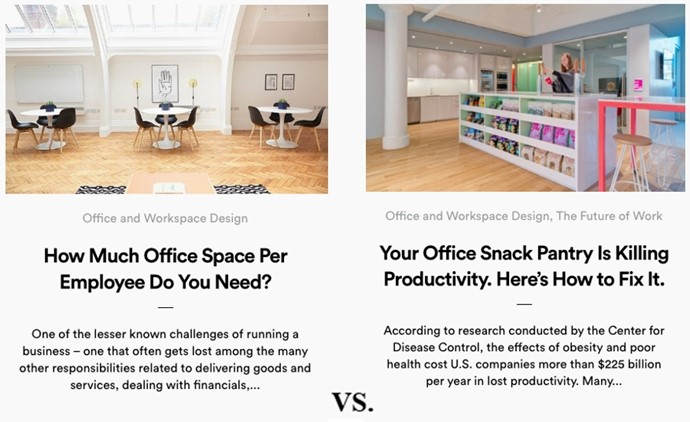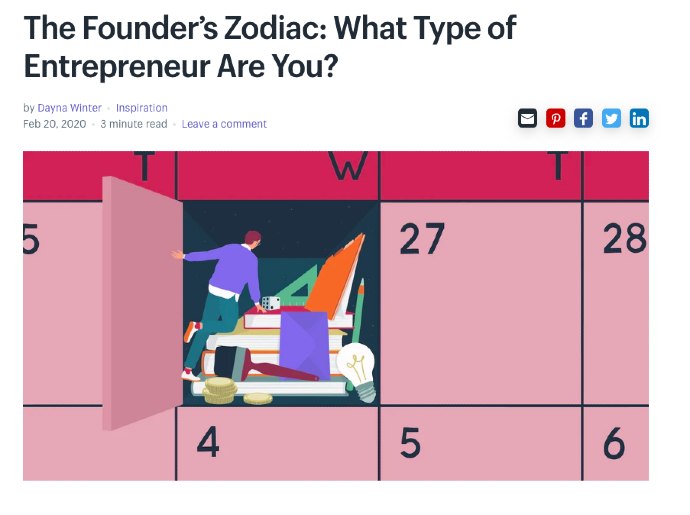Links remain crucial to search engine optimization. But it can be tough for B2B brands to build links, especially when nothing major is launching or a large corporate-level change isn't occurring.
But there are ways to build links throughout the year regardless of what is going on internally. The way to do that is to create your own news and resources that are interesting to publishers.
Of course, that's easier said than done. But I'll explain how "tangential content" is key for doing so and how you can incorporate it into your content and outreach strategy.
What is tangential content?
At Fractl, we define tangential content somewhat related, but not directly tied to, your product or service offering.
There's a sweet spot between content's being so related to what you do that your content sounds like an ad—and being so unrelated that people can't figure out why you created it in the first place. Tangential content lies in the sweet spot between the two.
Let's look at an actual blog to compare topical content with tangential content. The following are some examples of blog posts from SquareFoot, which I learned about when its head of marketing came on our podcast to talk about tying content to revenue.

This piece on the left is an example of topical content. It talks about something directed related to the brand—renting workspace. It helps people make a buying decision.
The piece on the right, on the other hand, is tangential. Rather than being about renting office space, it's about making your workplace more productive. It's appealing to people in the general audience, thus helping raise brand awareness and attracting top-of-the-funnel attention.
Why should you use tangential content?
For two primary reasons.
1. Build brand awareness through top-of-the-funnel on-site content
Blog content and other on-site resources can be extremely useful for providing companies with the information they need to convert. But top-of-the-funnel content has a place in your strategy, as well. For people to convert, they first have to know that your brand exists.
Tangential content can help broaden the awareness of your brand. Simply getting your name out there to an industry audience is a huge first step; it's the first time you begin to establish trust and recognition.
You can do so by creating high-quality content that is likely to rank for a broad keyword or is highly engaging and shareable (or, ideally, both!).
Take the following Shopify quiz, for example. It's fun content that is targeting its target market, entrepreneurs, but it isn't about anything specifically related to its brand. It's just meant to engage with its audience.

As of this writing, it was a Top 10 most engaged-with blog post, according to BuzzSumo, with 700+ Facebook engagements.
To succeed in executing this approach, research what your audience wants and create it for them, even if it's not strictly related to your brand offering.
2. Build backlinks by pitching the content to media outlets
On some occasions, to help your audience, you use unique insights and data you have, but there's a finite amount of such information. Which is why you should also have a plan in place for creating other content to help advance your objectives.
That's why we use tangential content in most of our link-building efforts for clients. When you're trying to earn media coverage, publishers usually have little interest in running something that's all about what you're selling (unless the value to their readers is obvious). Going the tangential angle allows you to explore other avenues of providing value while broadening the appeal to audiences.
Let's look at an example. (Note: This type of work is successful if you invest in it over time rather than trying it just once.) For a client, Influence.com, we created a project about social media etiquette. We surveyed people about what they thought was inappropriate behavior on different social platforms, and then reported on the results.

The company helps brands connect with influencers (and influencers connect with each other). Our project wasn't specifically about influencer marketing, though. Instead, we went the tangential route, zooming out a bit and covering social media, where many influencers have built their audiences.
The strategy worked. We pitched the content and earned media coverage and links from MSN, Bustle, Real Simple, Small Business Trends, Social Media Today, PR Daily, and others.
That's the link-building power of tangential content.
How can you create tangential content?
The creation of the content itself won't vary too much from the topical-content creation process. However, the main difference is at the ideation stage. If you don't find the perfect idea, the entire project will fall flat.
The key is to be open-minded and to practice "zooming out." Take your specific offering and ask yourself: What general category does this fall in? Then, take that category and write down related topics.
Here's a top-level example from Porch.com, a site that helps connect people with home-improvement contractors.

We created content about all of the topics you see in the image. At first glance, parenting may not be the first thing you think of when visiting Porch.com. However, if they were to do a study about parenting, you might well think that makes sense: Porch.com is trying to help you build a better home, and this is a similar theme—just in a broader, tangential sense.
* * *
If you're looking for ways to bolster your link-building and brand-awareness efforts, then creating and promoting tangential content may be just the tactic you were looking for.
Start by considering your general industry and what other concerns and questions your target audience might have that aren't directly tied to your offering. You'll be on the right track.




